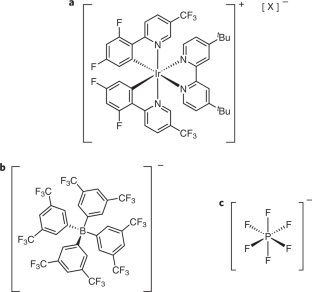2022-09-09 アメリカ国立再生可能エネルギー研究所(NREL)
NRELとプリンストン大学の共同研究チームは、100年来のマイクロ波技術を復活させ、確立された光駆動型化学の驚くべき特徴を明らかにしました。
フォトレドックス触媒は、近年復活しつつある光化学の一分野であり、化学反応の駆動に熱や反応性の高い化学物質ではなく、光を用いるものである。これにより、運動学的または熱力学的障壁の高い反応を、最終生成物をよりよく制御して駆動することが可能になり、有害な成分が少なくなる可能性もあります。
しかし、これらの新しい反応を製造スケールで利用するためには、反応の仕組みを詳細に理解する必要がある。
NRELチームが研究した触媒は、2つの半分からなるイオン性化合物でした。片方はプラスに、もう片方はマイナスに帯電しており、全体の電荷がゼロになるようになっている。この場合、プラス側が光駆動型化学反応においてすべての仕事をすると考えられ、マイナス側は不活性な「対イオン」であると考えられていた。
研究チームは、マイクロ波信号が溶液を通過するときにどのように変化するかを正確に測定することによって(光がある場合とない場合)、分子が光で励起された後に負に帯電した対イオンが移動することを明らかにしました。アーリー教授は言う。「分子が化学反応を起こすには電子の通り道が必要ですが、対イオンはそれを塞いでしまう。研究チームは、対イオンのブロック作用が、2つの異なる種類の反応の間で、4倍の変化をもたらすことを発見しました。」
<関連情報>
- https://www.nrel.gov/news/program/2022/new-insights-revealed-through-century-old-photochemistry-technique.html
- https://www.nature.com/articles/s41557-022-00911-6
イオンペア再編成によるフォトレドックス触媒の反応性制御 Ion-pair reorganization regulates reactivity in photoredox catalysts
J. D. Earley,A. Zieleniewska,H. H. Ripberger,N. Y. Shin,M. S. Lazorski,Z. J. Mast,H. J. Sayre,J. K. McCusker,G. D. Scholes,R. R. Knowles,O. G. Reid
Nature Chemistry Published:14 April 2022
DOI:https://doi.org/10.1038/s41557-022-00911-6

Abstract
Cyclometalated and polypyridyl complexes of d6 metals are promising photoredox catalysts, using light to drive reactions with high kinetic or thermodynamic barriers via the generation of reactive radical intermediates. However, while tuning of their redox potentials, absorption energy, excited-state lifetime and quantum yield are well-known criteria for modifying activity, other factors could be important. Here we show that dynamic ion-pair reorganization controls the reactivity of a photoredox catalyst, [Ir[dF(CF3)ppy]2(dtbpy)]X. Time-resolved dielectric-loss experiments show how counter-ion identity influences excited-state charge distribution, evincing large differences in both the ground- and excited-state dipole moment depending on whether X is a small associating anion (PF6−) that forms a contact-ion pair versus a large one that either dissociates or forms a solvent-separated pair (BArF4−). These differences correlate with the reactivity of the photocatalyst toward both reductive and oxidative electron transfer, amounting to a 4-fold change in selectivity toward oxidation versus reduction. These results suggest that ion pairing could be an underappreciated factor that modulates reactivity in ionic photoredox catalysts.



